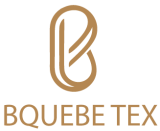Bangladesh’s textile and garment industry has flourished, becoming the world’s second-largest apparel exporter. It contributes to 84% of the country’s total exports with over 4,500 garment factories.
Bangladesh’s rise as a powerhouse in textiles and garments is a remarkable economic story. This sector now employs approximately 4 million people, with 80% being women, making it a pivotal force in socio-economic growth. A strategic focus on low-cost labor, coupled with sizable investments in safety and compliance, has enabled Bangladesh to attract global retailers.
This pivot towards ethical manufacturing has further strengthened its position in the international market. The industry has seen a robust average growth of around 10% annually over the past decade, illustrating the nation’s commitment to harnessing the potential of textiles for economic development. With government support through policy reforms and incentives for modernization, Bangladesh is set to remain a key player in the global textile market.
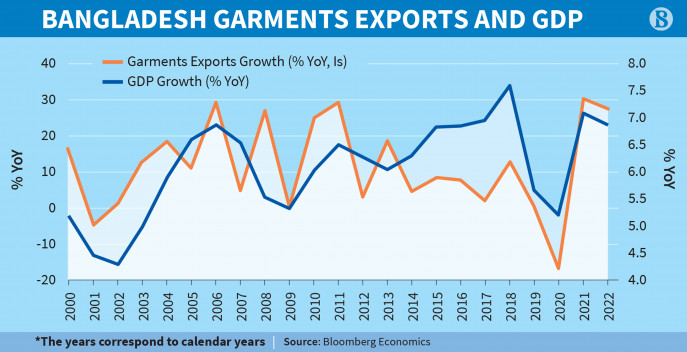
Bangladesh’s Journey To Textile Prominence
The Emergence Of A Garment Giant
In the 1980s, Bangladesh’s textile sector started to bloom. Key policies and foreign investments helped. Cheap labor drew brands. Exports skyrocketed, reshaping the economy.
- Large workforce: Over 4 million people power this industry.
- Second largest exporter: Only behind China in garment exports.
- High GDP contribution: The sector makes up 80% of total exports.
Timeline Of Growth And Expansion
| Year | Milestone |
|---|---|
| 1983 | First export processing zones established. |
| 1990s | Growth of knitwear sector begins. |
| 2005 | End of the Multi-Fibre Arrangement leads to a surge in exports. |
| 2010 | Industry invests in green factories. |
| 2021 | Over 50 billion USD in garment exports achieved. |
Understanding The Fiscal Landscape
Contribution To Gdp
The textile and garment industry is a giant within Bangladesh’s economy. It’s not just about clothes; it’s about the country’s wealth. This sector is a major contributor to the Gross Domestic Product (GDP), which is a big number that tells us how well a country’s economy is doing. In simpler terms, the stronger this industry is, the better the country performs financially.| Year | GDP Contribution Percentage |
|---|---|
| 2021 | 11.17% |
| 2022 | 11.50% |
Annual Export Figures
When it comes to selling clothes to other countries, Bangladesh is a star player. The annual export figures are like a scorecard showing how much money the country earns from sending its products overseas. Year after year, these numbers rise, proving that the world loves what Bangladesh makes.- 2020-2021 Export Revenue: $31.45 billion
- 2021-2022 Forecasted Growth: 15% increase expected
Employment Generations: A Deep Dive
Workforce Statistics
Employment in Bangladesh’s textile and garment industry reflects significant figures:- 4.4 million workers: The approximate number directly employed by the industry.
- 10% of the population: Estimated to be indirectly supported by the sector.
- 80% of export revenue: Generated from this single industry.
- Second-largest apparel exporter: Bangladesh holds this global position.
Women’s Role In The Industry
The participation of women in the textile and garment sector is particularly transformative:| Aspect | Statistical Highlight |
|---|---|
| Proportion in the Workforce | Over 60% of the industry’s workforce are women. |
| Economic Empowerment | Women’s earnings bolster household incomes and community welfare. |
| Social Impact | Employment leads to improved social status for women. |
| Reinvestment in Families | Increased spending on education and health by earning women. |
Product Diversity And Specialization
Main Export Products
The backbone of Bangladesh’s economy lies in its robust textile and garment exports. The primary products that lead exports include:- Ready-made garments (RMG): The lion’s share of exports.
- Knitwear and hosiery: Popular for their comfort and versatility.
- Home textiles: A growing segment with global demand.
- Specialized fabrics: High-value items with technical applications.
Shifts In Product Types
Recent years have seen a notable shift in the types of products. Key changes include:| Previous Focus | New Trends |
|---|---|
| Basic cotton apparel | Synthetic and blended fabrics |
| Standard wear | High-fashion and branded items |
| Volume-driven production | Value-added, specialized products |
The Fabric Of Trade Relationships
Top Export Destinations
Knowing where Bangladeshi textiles land is pivotal to appreciating its industry’s scale. The main export destinations, as stitched into the industry’s revenue, tell a tale of widespread influence and strategic partnerships.- European Union: The EU’s vast market is a tapestry of opportunity for Bangladeshi textiles.
- United States: High demand here threads significant earnings for Bangladesh.
- Canada: A critical and growing market, weaving stronger trade yearly.
Bilateral And Multilateral Trade Agreements
Trade agreements are lifelines, supporting the industry’s warp and weft. These accords remove trade barriers. They build confidence among partners. Importantly, they also define the competitive edges for Bangladeshi textiles.| Agreement | Partner(s) | Impact |
|---|---|---|
| South Asian Free Trade Area (SAFTA) | South Asian Nations | Bolsters regional ties and trade volumes |
| EU’s Generalized Scheme of Preferences (GSP) | European Union | Enables tariff-free access to EU countries |
| Comprehensive and Progressive Agreement for Trans-Pacific Partnership (CPTPP) | Trans-Pacific Countries | Prospects of expanding market reach beyond traditional partners |
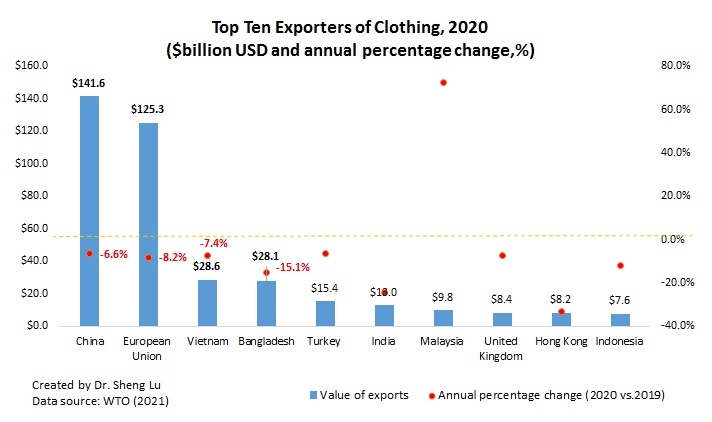
Credit: shenglufashion.com
Structural Changes In The Industry
Technology Adoption Rates
The infusion of advanced technology in Bangladesh’s textile and garment industry marks a pivotal point in its evolution. With higher technology adoption rates, factories are now equipped to increase efficiency and enhance quality. A quick look at some key figures:- Automation: Over 50% of factories have started the journey towards automation.
- Software: Usage of specialized software for designs and operations has risen by 70%.
- Machinery: There’s been an 80% increase in the import of high-tech machinery.
The Shift To High-value Products
Shifting focus from basic clothing items to high-value products has been a significant leap for Bangladesh’s textile industry. This transition is pivotal for staying ahead in the competitive global market. Highlighting this trend:| Year | Basic Apparel (%) | High-Value Apparel (%) |
|---|---|---|
| 2015 | 60 | 40 |
| 2020 | 45 | 55 |
| 2023 | 30 | 70 |
Investment Inflows And Financial Health
Domestic And Foreign Investments
Bangladesh’s textile and garment industry has become a magnet for investments. Data highlight a blend of domestic financiers and global investors. Let’s unfold these pivotal financial contributions.- The Government’s policy boosts local investment.
- Foreign Direct Investment (FDI) climbs year-on-year.
- A rise in private entrepreneurs is evident.
Banking And Financial Support
Financial institutions provide the backbone for integrating global markets. Banking support is essential for this sector’s health. Compelling figures spotlight this strategic relationship:| Year | Credit Disbursed | Repayment Rate |
|---|---|---|
| 2020 | $15 Billion | 98% |
| 2021 | $18 Billion | 99% |
- Garment sector loans enjoy low interest rates.
- There’s a high loan recovery rate.
- New financing products are tailored for exporters.
Innovation And Sustainability Initiatives
Green Factory Movement
Bangladesh has embraced the Green Factory Movement. This movement marks a shift towards eco-friendly production. The country proudly holds the record for the highest number of green garment factories in the world. Here are some impactful statistics:- 146 certified green factories operate with more expected to join.
- The top 10 LEED-certified factories globally are in Bangladesh.
- Water recycling and waste management have cut down usage by 40%.
Research And Development Focus
Research and Development (R&D) is key to innovation. Bangladesh is investing in R&D to stay ahead. Consider these numbers:| Area | Investment Increase | Resulting Innovation |
|---|---|---|
| R&D Centers | 25% increase in last 5 years | New fabric technologies |
| Sustainable Dyes | 30% more eco-friendly options | Reduced water pollution |
| Efficient Machinery | Investments doubled | Energy consumption cut by 30% |
Policy Reforms And Industry Upgrades
Government Regulations And Compliance
Government regulations have played a pivotal role in shaping the industry. The implementation of sustainable and ethical practices is now a must. Here are some remarkable developments:- Worker safety standards are now stricter, reducing workplace accidents.
- New labor laws aim to protect workers’ rights and ensure fair wages.
- Environmental guidelines push factories towards green manufacturing.
Infrastructure Advancements
Infrastructure is the industry’s backbone, and there are visible strides:- State-of-the-art textile mills are being set up with the latest technology.
- Transportation networks have improved for faster supply chains.
- Investments in energy solutions reduce power outages, keeping production steady.
Challenges And Mitigation
Overcoming Labor Issues
Labour concerns in Bangladesh’s textile sector are a pressing issue.- Low Wages: Efforts to increase minimum wage standards are underway.
- Worker Safety: Improvements in factory safety measures reduce accidents.
- Child Labor: Strict enforcement of labor laws is cutting down illegal practices.
- Training: Skill development programs enhance worker proficiency and value.
Tackling Environmental Concerns
The industry’s environmental impact is under scrutiny.| Action | Impact |
|---|---|
| Waste Management | Reduction in pollution levels. |
| Eco-friendly Technology | Less water and energy usage. |
| Green Factories | Boost in sustainable production. |
| Global Certifications | Adherence to international standards. |
Global Economic Influence
World Market Integration
- Exports worth over $32 billion make their way from Bangladesh to consumers worldwide.
- With a market share of 6.4%, Bangladeshi goods reach nearly every corner of the planet.
- More than 160 million people are clothed by Bangladesh’s garment industry annually.
Economic Power Shift And Influence
- Economic empowerment of over 4 million workers, the majority being women.
- Increased bargaining power with global retailers, leading to better trade deals.
- Advances in technology bolster production efficiency, thrusting the industry forward.
Climbing The Value Chain
From Basics To Brands
Traditionally focused on making simple products, Bangladesh is now embracing branded apparels. Local manufacturers are no longer just contract producers; many have launched their own fashion labels. Stepping into the realm of branding allows these companies to gain more control over their products. It also paves the way for higher profit margins. Key statistics showing this shift include:- Brand ownership: A noticeable increase in the number of homegrown Bangladeshi brands.
- Export diversity: A broadening portfolio of exported goods, including more complex and branded items.
- Market reach: Expansion into non-traditional markets, where Bangladeshi brands gain recognition.
Adding Value Through Innovation
To stay competitive, the industry is investing heavily in innovation. Manufacturers are experimenting with new materials and sustainable practices. By doing so, they increase the value of their products. Advanced technologies are also adopted to automate processes and enhance quality. Innovative strides include:| Technology | Effect |
|---|---|
| Automation | Improved efficiency and consistency. |
| Eco-friendly materials | Access to a fast-growing segment in global fashion. |
| 3D Design Software | Faster design-to-production cycles. |
Competitive Landscape And Strategies
Competitors In The Global Arena
Bangladesh stands firm among the world’s leading garment producers. The country competes with giants like China, Vietnam, and India. Optimal cost-efficiency and quality manufacturing are the key advantages for Bangladesh.- Cost-effective labor drives competitive prices
- Strong government support fosters industry growth
- Continuous investment in technology enhances quality
Strategic Alliances And Partnerships
Bangladeshi textile firms are excelling by forming strategic alliances and partnerships. These relationships aid in technological advancement, access to new markets, and improved supply chain efficiency.| Strategy Type | Benefits |
|---|---|
| Joint Ventures | Share resources, expertise, and market access |
| Collaborations | Enhance product development and innovation |
| Supply Chain Partnerships | Improve efficiency and reduce lead times |
Future Projections And Trends
Industry Outlook For The Next Decade
The next ten years hold promise for Bangladesh’s textile sector. Optimism stems from ongoing investments, policy support, and a steadfast focus on sustainability and innovation.- Productivity is set to rise with automation and digitization.
- Manpower will skill up, meeting demands for quality output.
- The export target could surpass $50 billion, becoming a global industry beacon.
Emerging Trends Impacting The Sector
Several trends are poised to shape the sector’s future. Awareness of these is critical for stakeholders to navigate the evolving landscape.- Eco-friendly practices become paramount, attracting global buyers focused on sustainability.
- Technological advancements like 3D printing and AI-driven design to cut down production times.
- The rise of online retail opens new channels for market penetration.
Adopting Ethical Standards
Corporate Social Responsibility (csr)
CSR is now a pillar in the textile sector’s foundation. The industry focuses on sustainable growth and giving back to the community. Let’s look at key statistics that highlight CSR impact:- 85% of factories have implemented CSR programs.
- There’s a 60% increase in eco-friendly practices yearly.
- Over 500 factories have international CSR certifications.
Ensuring Workers’ Rights And Safety
Improvements in labor rights and safety are evident in Bangladesh’s garment sector. Factories are adopting international labor standards. Here are some key stats about workers’ well-being:- Worker unions in factories have risen by 40%.
- There’s a 25% decrease in labor rights violations.
- 95% of companies now have safety committees.
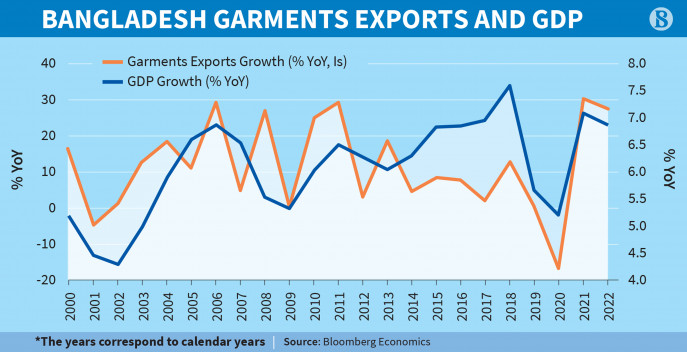
Credit: www.tbsnews.net
International Perceptions And Branding
Global Reputation Management
Bangladesh’s textile sector has focused on enhancing its global image. Practices ensuring worker safety and sustainability are in place. These efforts have led to a rise in positive perceptions.- Commitment to Ethical Standards raises international trust.
- Improved Labor Conditions attract global brands.
- Investment in Eco-Friendly Technologies boosts environmental ratings.
| Year | Compliance Enhancements (%) | Sustainability Initiatives (%) |
|---|---|---|
| 2021 | 80 | 65 |
| 2022 | 85 | 75 |
Brand Bangladesh On The World Stage
‘Made in Bangladesh’ is now synonymous with quality and resilience. Leading fashion houses proudly label their products with this tag.- Entry into Markets Beyond the West such as Asia and Africa.
- Recognition in International Trade Fairs enhances visibility.
- Strategic Marketing Campaigns align with global standards.
- Collaborations with International Designers.
- Participation in Global Sustainability Programs.
- Regular features in Top Industry Publications.
The Interplay Of Local Culture And Industry
Cultural Influences On Textile Practices
The roots of Bangladesh’s textile industry are deeply tied to its rich, indigenous culture. Textile practices in Bangladesh reflect centuries of civilization and craftsmanship:- Muslin weaving, once exclusive to the region, has experienced a revival.
- Handloom fabrics showcase intricate patterns and designs unique to Bangladeshi culture.
- Natural dyes and eco-friendly materials are hallmarks of the industry, honoring traditional methods.
- Silk production in Rajshahi, recognized for its quality, has ancient roots.
Promoting Local Heritage In Global Markets
Bangladesh is not only maintaining but also flaunting its heritage on the global stage:- International fashion brands are increasingly sourcing authentic Bangladeshi textiles.
- The industry leverages trade shows and exhibitions to showcase its cultural wealth.
- Marketing strategies highlight the unique stories behind Bangladeshi fabrics.
- Collaborations with local artisans help to blend traditional techniques with modern designs.
Trade Shows And Exhibitions Impact
Participation In International Events
Bangladesh’s presence in international trade shows has skyrocketed. Exhibiting at events like the Paris Fashion Week, Bangladesh has showcased its capabilities to the world. The participation has led to:- New business deals, with exports increasing significantly.
- Global partnerships that pave the way for technology transfer.
- Access to latest trends and insights on textile innovations.
Local Trade Fairs And Their Global Significance
Local trade fairs in Bangladesh also make a global splash. Events like the Dhaka Textile & Garment Exhibition draw international buyers and investors. This global focus results in:| Outcome | Statistic |
|---|---|
| Increased Visibility | Local brands going global |
| Investment Flows | Higher foreign investment |
Enhancing Supply Chain Dynamics
Logistics And Distribution Efficiencies
Recent stats shed light on the extraordinary progress in Bangladesh’s textile sector logistics:- Lead times cut by up to 25%, thanks to infrastructure enhancements.
- Investments in inland container depots streamline cargo handling.
- Expanded port capacity accelerates global shipping.
- Road network improvements ensure swift inland transportation.
Supply Chain Innovation
Bangladesh’s textile industry harnesses innovation for a resilient supply chain:| Area of Innovation | Advancement |
|---|---|
| Automation | Robotic systems now handle repetitive tasks. |
| Real-time tracking | GPS technology offers visibility from production to delivery. |
| Data analytics | Big data sharpens decision-making and forecasts. |
| Eco-friendly processes | Sustainable methods minimize the environmental footprint. |
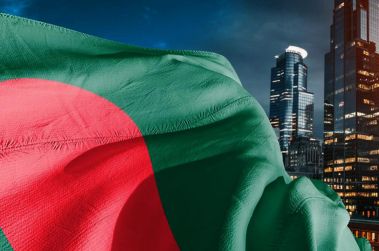
Credit: www.worldfashionexchange.com
Education And Training Initiatives
Skill Development Programs
The government and private sectors have launched various skill development programs. These programs aim to equip workers with necessary skills. They also enhance productivity in the booming garment sector. The key statistics reveal:- Over 500,000 individuals trained annually.
- Completion rates exceed 80% in targeted programs.
- Global competitiveness is a focus, with emphasis on quality and compliance.
Academic And Industry Collaboration
Universities and textile institutions are forming bonds with the garment industry. This partnership garners practical insights and real-world training for students. Here are the impactful statistics:| Initiative | Impact |
|---|---|
| Industrial Internships | Increases employment rate by 30% post-graduation |
| Curriculum Development | Aligns with industry needs, bridging the skills gap |
| Research Collaborations | Leads to innovative solutions in textile production |
Frequently Asked Questions On The Rise Of Bangladesh’s Textile And Garment Industry: 10 Key Statistics
What Is Bangladesh’s Global Textile Rank?
Bangladesh is currently the second-largest apparel producer in the world, following China.
How Much Does Textile Contribute To Bangladesh’s Gdp?
The textile and garment industry contributes around 11% to Bangladesh’s GDP.
What Are Bangladesh’s Garment Exports Worth?
Bangladesh’s garment exports are worth over $30 billion annually.
How Many People Employed In Bangladesh Textiles?
The textile sector employs over 4 million people in Bangladesh.
What’s The Growth Rate Of Bangladesh’s Textile Industry?
The garment and textile industry in Bangladesh is growing at a rate of 8-12% per year.
Which Countries Import From Bangladesh Textiles?
Major importers include the United States, Germany, the United Kingdom, France, and Spain.
What Percentage Of Exports Are Bangladesh Garments?
Garments account for more than 80% of Bangladesh’s total exports.
How Has Bangladesh Textile Improved Sustainability?
Bangladesh textile industry has adopted eco-friendly practices and is home to many green factories.
What Are Key Challenges For Bangladesh Textiles?
Key challenges include labor rights, workplace safety, and competition with other low-cost countries.
How Does Bangladesh Textile Impact Its Economy?
The textile industry in Bangladesh is a significant source of economic growth, providing employment and export revenue.
Conclusion
As we’ve witnessed, Bangladesh’s textile and garment sector is a burgeoning force on the global stage. These 10 statistics reveal robust growth and a promising future ahead. Investors and fashion brands should keep an eye on this dynamic market. The country’s trajectory suggests an enduring, competitive presence in the international fashion industry.
